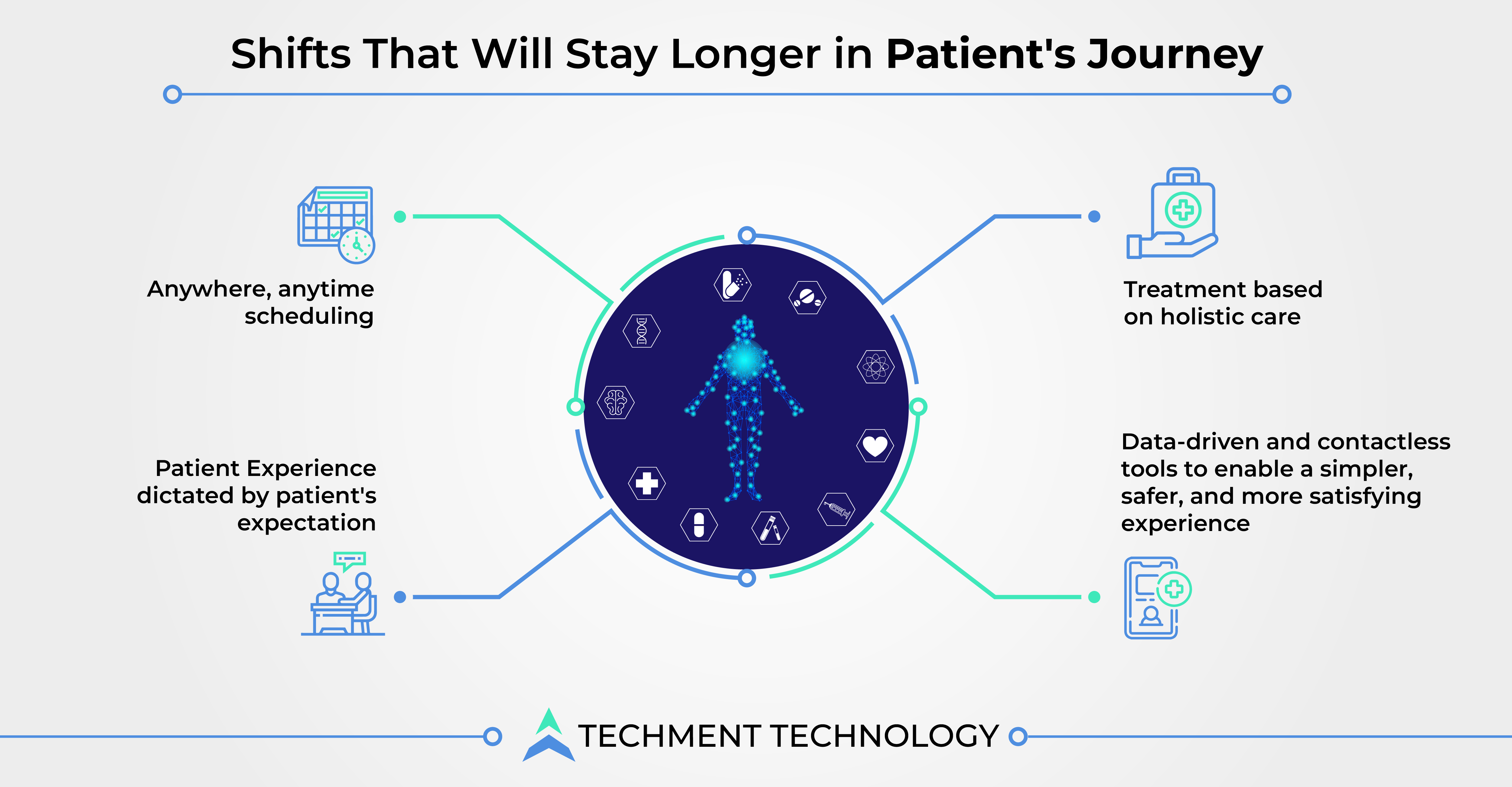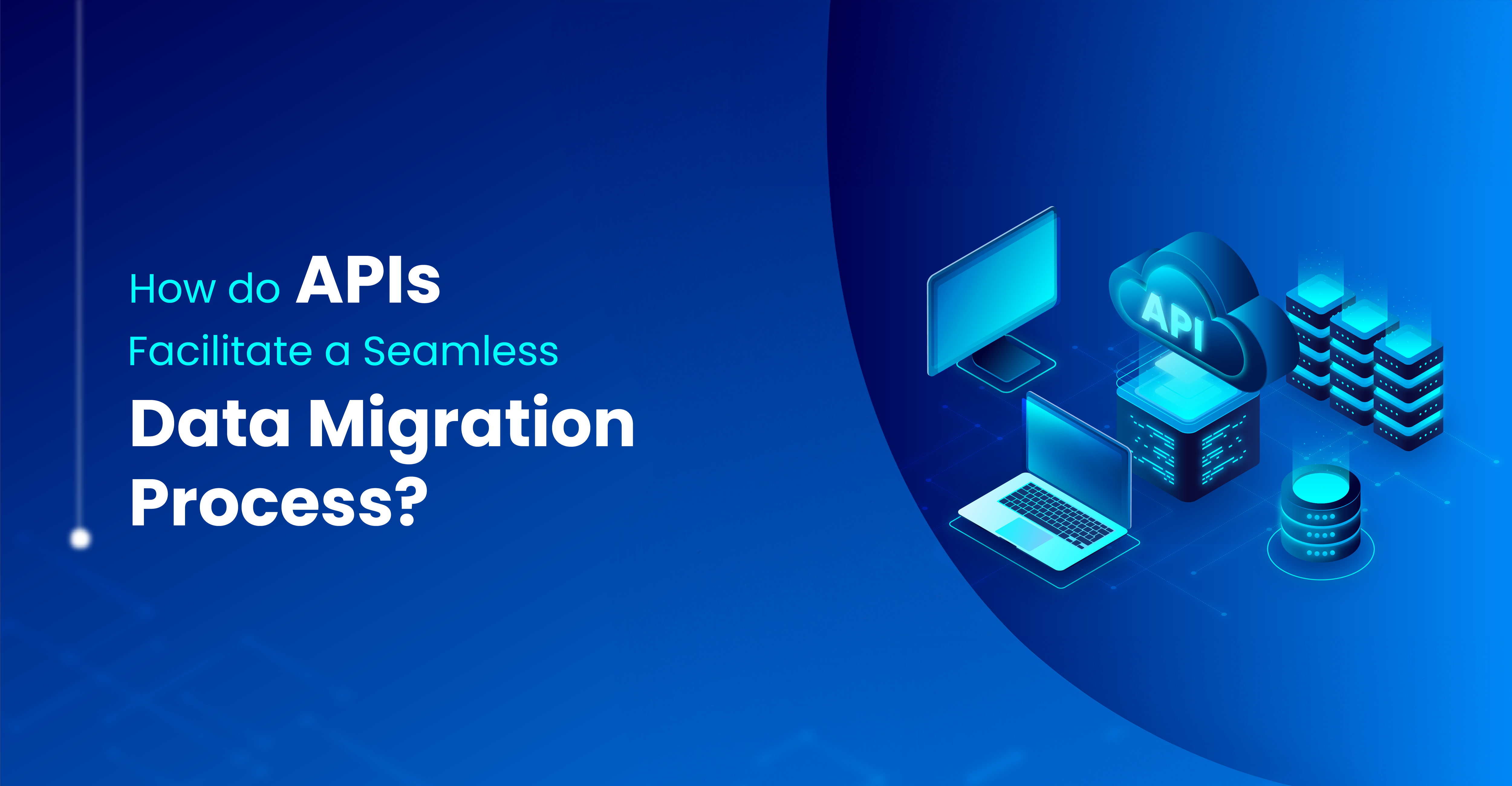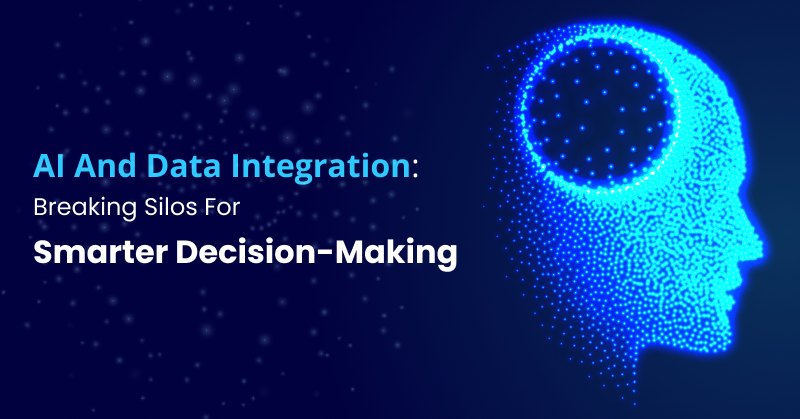Post-pandemic healthcare consumers are getting accustomed to seamlessly personalized patient experience to enhance their quality of life. The growing trends in healthcare consumerism are propelling businesses to use big data to improve diagnostic efficiency and boost profits using the latest analytical tools to make data-driven decisions.
The patient’s journey provides an understanding of their overall experience in care and helps healthcare providers to find new ways to improve the same. Data analytics enable providers to build targeted experiences that address each patient’s unique needs, and deliver a more successful patient outcome. The health systems must focus on creating an excellent patient experience and determine improvement areas for mapping the personalized patient journey.
Pandemics transformed the patient journey where data and technology played a crucial role by providing convenience, flexibility, and control to get care on their terms. Post pandemic, these changes emerged, and here they are to stay longer:

Personalization in healthcare combines two perspectives i.e., the patient and healthcare organization where a care provider recognizes unique health history and circumstances, receives relevant content, and achieves better health outcomes. Technologies like RPM (remote patient monitoring) improves clinical insights on patients’ status, changing symptoms over time, and allows providers to change patients’ care plan accordingly. According to Grand View Research report, the revenue of personalized medicine is forecasted to grow upto USD 796.8 billion.
The data obtained from EHRs, clinical trials, administrative data, etc., are often siloed, and practitioners lack crucial information; ultimately, patients have fragmented experiences. Data fragmentation across systems led by such disconnected technology infrastructure causes frustration in the data integration process.
Hence for personalized patient experience, healthcare companies need to have unified data across the organization to have a 360-degree view of patients’ data. Let’s dive into the data-driven approaches companies must take to enhance patient journeys.
How to Unlock Data Potentials for Personalized Patient Journey?
All healthcare stakeholders are expected to provide personalized patient journeys to increase patient engagement and satisfaction. The following concrete steps would help to achieve this goal:
1. Adopting Consumer-driven Healthcare: For stakeholders in healthcare, i.e., payers, providers, and policymakers, a consumer-driven approach is becoming increasingly essential to meet consumers’ needs. To personalize the patient journey, companies’ solutions must be highly consumer-driven, for which patients need to be motivated to shop around carefully.
- Providers must tackle the fragmented infrastructure challenge and manage patient data from various disconnected EHR systems.
- Moving to a cloud platform for unified patient data across multiple systems and simplified workflows across teams is essential. This would create a 360-degree view of all cost, utilization, risk, and quality data in one longitudinal record that will become a single source of truth.
- FHIR (Fast Healthcare Interoperability Resources)-enabled platform that integrated disparate sources would provide high-level insights needed for a holistic and personalized patient experience.
2. Moving From CRM to PRM: Healthcare CRM (customer relationship management) software helps organizations acquire and understand pre-clinical behavior and patient demographics. Instead of patient retention efforts, companies must try for holistic PRM (patient relationship management), which incorporates everything from outreach and scheduling to follow-up visits and marketing surveys. And this won’t happen without high-quality data integration.
With PRM, healthcare providers can personalize outreach to meet patients’ unique needs and preferences will significantly impact engagement. This PRM will help physicians identify sources of referrals and provide insights to keep patients within areas of influence.
3. Adopting Technologies for Data Integration: EHRs, labs, pharmacies, and more provide all information related to patient journey, enabling an organization to streamline workflow among the care team members. With all the data on one platform, companies can build digital engagement strategies to drive consumer activation, build long-term patient relationships, improve care coordination, and build interconnected healthcare for personalized patient journeys.
Adoption of big data, IoT technology, and artificial intelligence (AI) plays a vital role in achieving flexibility of data flow from sources to combine data within different applications in the software stack.
4. Using Conversation Intelligence: When planning a personalized patient journey, it’s essential to connect the entire omnichannel journey. Post pandemic consumers are highly accustomed to a higher level of service, and patients have begun to expect consumer-level personalization and convenience from their healthcare providers. Healthcare providers have now started using conversation intelligence with AI-powered software, enabling revenue-generating teams for marketing, sales, eCommerce, and exceptional patient experience.
Conversation intelligence uses AI and ML to analyze speech with the help of NLP to derive data-driven insights from conversations between the marketing team and patients. The data is visualized in dashboards and streamed to other platforms to take action on it in real-time.
5. Incorporating Interoperability to Connect All Stops of Data Sources: Unlocking data interoperability in healthcare has enormous benefits for payers, patients, and every person and organization. Practicing interoperability brings a timely view of accurate patient data that can drive breakthroughs in personalized medicines and close gaps in care.
Data and AI/ ML are here to make it happen as they make unstructured data collected from EHRs, lab reports, etc., are processed to make it readable and structured. Also, the onerous tasks and processes are automated to create standard formats that every participant in the system can access and use.
Interoperability resources such as the FHIR standard collates, analyzes, and represents disparate data to get insights on population health and personalize patient journeys for larger consumers.
A holistic approach is required based on data from multiple sources and systems to find, guide, and keep patients for life. Companies not only need to collect patient data but also require deep-diving into social determinants and other factors for obtaining a 360-degree view of the patient journey and making it personalized.
Tailoring Experiences of Different Patients Will Bring Influx of Personalized Consumer Data
Personalized care is both desirable and elusive for healthcare. When trying to provide this, digital health companies lean on technological skills like data to expedite these personalized care relationships. Developing deep insights will require stakeholders to apply advanced analytics to multidimensional data.
Stakeholders should explore how they can better tailor the experiences of different patients’ needs as consumers’ data grows in volume and new technologies make it possible to parse it.
At Techment Technology, we ingest, aggregate, and normalize healthcare data across systems and provide analytical insights to improve outcomes across all stages of care. For more information, get in touch with us.
 All Posts
All Posts

